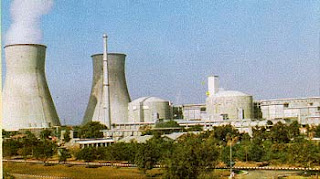What‘s Quantitative Easing? Why it’s the new way of saying “printing money” of course! Let this entertaining seven minute video explain it to you.
But isn’t printing money bad?
Yes. It led to hyperinflation and the fall of the Weimar Republic in Germany and probably contributed to the rise of Hitler. It has also lead to the downfall of some regimes in certain South American countries but fortunately, unlike the U.S., they were not important on the world stage.
So why has the US Federal Reserve been printing money?
When confidence finally evaporated in the cleverly constructed financial products, which created worthless financial assets out of other people’s bad debts, the lack of real value behind these assets created enormous holes in the balance sheets of the banks. This was the start of the 2008 credit crunch.
To prevent banks from going bust, and in the process wiping out even more assets, an attempt was made to pump money into the economy by allowing the U.S. Federal Reserve to enormously increase the money supply in two phases called QE1 and QE2. The theory was that this money would filter out into the real world and prevent huge job losses by stimulating growth in the economy. In two episodes of quantitative easing, $2,300 billion dollars of money was printed since 2009.
So did it work?
Well no actually. Unemployment has still increased in the U.S. and growth has slowed.
So why didn’t it work?
As the graph below shows the banks have held on to the money and their monetary base has increased dramatically.

At first this was justified by the banks who claimed that, after the shock of writing off their worthless investments, the banks needed to rebuild their reserves.
But surely they have done that now?
Yes probably.
Then why are banks still reluctant to lend?
They don’t want to release this money by lending to other banks because the bankers themselves are aware that they have not yet fully disclosed all of their bad assets. They think that if we haven’t disclosed all our problem assets, then others will not have done so either! Basically they don’t trust each other.
So where has the money been going?
Into gold, commodities and stocks which are regarded as safer investments.
So what’s the answer?
Some people are still calling for more Quantitative Easing, but faced with strong opposition in Congress, Ben Bernanke (the Chairman of the U.S. Federal Reserve) has, so far, said no and in the process he’s sparked off yet more market turbulence. After such a large injection of cash has already taken place, to release yet more could be seen as a desperate measure, to which the market and the credit rating agencies could well react badly.
Is the UK better off?
No, the UK’s monetary base has also tripled whilst producing little growth, for the same reasons as prevail in the U.S. concerning lack of disclosure.
So what’s the answer - full disclosure?
Maybe! Some commentators are calling for mandatory full disclosure so that banks holding bad assets would be forced to acknowledge them and declare them properly on their balance sheets. This would be like disinfecting the hospital ward after a bad infection had contaminated the patients. Each patient (asset) would have to be examined for infection before it was re-admitted to the ward. It would be a process which some think could be safely managed, whilst others disagree. The risk is that several banks would collapse, creating a lack of confidence in the economy, and a massive political fallout in a U.S. election year.
So it’s all back to confidence?
Yes indeed! If the public don’t have confidence in the financial institutions and the currency they will be reluctant to invest and may withdraw money from the real economy. This would be catastrophic for growth and employment.
What’s the risk of runaway inflation?
There’s a real risk that high inflation will result when the money finally works its way out into the real economy. In fact this is almost a matter of deliberate policy since the U.S. wants to weaken its currency and thereby reduce its debt burden.
The Fed is a private company?
Something else you should know is that U.S. Federal Reserve was set up in 1913 as a private company with the banks as shareholders. Although it’s subject to congressional oversight it was intended to serve both the public interest and the interests of the banks.
OK clever dick, what would you do?
Go liquid, spread it around a number of UK banks and watch out for QE3!












